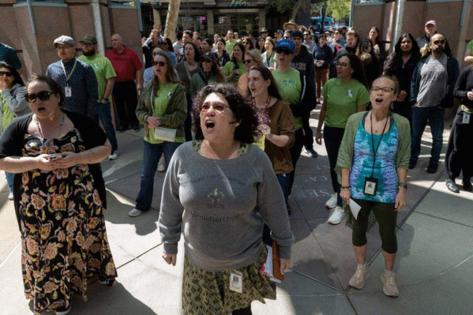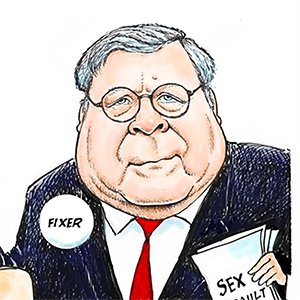California's vacation leave payouts creating liability on state departments
Published in News & Features
SACRAMENTO, Calif. — When 1,299 California Highway Patrol employees left their jobs in 2024, they collectively pocketed $67 million from unused vacation hours. The average payout from CHP was $52,000 per person.
Payouts varied from 55 cents for Los Angeles County public safety dispatcher Jorge Ortiz to Randy England, a CHP captain in Mendocino County, who cashed out just short of $400,000.
Made possible by a program that allows state employees to convert accrued vacation into cash upon leaving state service, these vacation leave hours also create an unfunded liability for state departments, according to reports from the Legislative Analyst’s Office.
Last year, the state paid $431 million to those leaving state service.
Recent bargaining negotiations with the governor led to increased vacation payout caps for nearly half of the state’s bargaining units.
At the same time, the state pushed unions to agree to a leave program that reduces their pay in exchange for more vacation hours. Employees who don’t take that additional time off can save more hours in their leave bank.
Nine bargaining units saw their maximum vacation hour accrual increase by 120 hours, effective until June 2027. For the SEIU Local 1000, employees now can accrue up to 760 hours of vacation leave annually until June 30, 2027.
“We pushed for higher caps in response to member feedback,” SEIU Local 1000 chief negotiator Susan Rodriguez said in an emailed statement. “This change protects those hard-earned benefits.”
Previously, most state workers received a payout of up to 640 hours, with the compensation based on their final salary. While California Highway Patrol’s cap remains unchanged, the department’s workers can accrue the most time out of all of California’s state workers with 924 hours.
Meanwhile, the California Department of Corrections and Rehabilitation has remained the vacation leave payout leader for the past five years. For the department in 2024, the per capita payout was about $27,000.
“Vacation leave payouts are something that CHP anticipates and budgets for annually,” spokesperson Jaime Coffee wrote in an email.
But if departments don’t account for payouts that are large enough to affect their budgets, they are faced with financial difficulties that can prevent them from filling a vacant position or force them to cut expenses elsewhere.
In those circumstances, departments “have to cut services and people get very upset about it because they’re squeezed so tight,” said Susan Shelley, vice president of communications for the Howard Jarvis Taxpayers Association.
The financial impact of these agreements can hit smaller departments especially hard, according to Nick Schroeder, an analyst at the nonpartisan Legislative Analyst’s Office.
He cited a 2013 situation when an executive director at the Fair Political Practice Commission left and his position sat vacant for eight months.
The commission he left had a payout worth more than 70% of his $140,000 annual salary despite burning off two months worth of leave, according to the report. His monthly salary was $11,750.
The FPPC requested funding for the position after the vacancy and successfully received it. As of June 2025, the FPPC has a total of 112 employees.
The last department an employee works for is responsible for paying their leave, based on their latest salary. Even if an employee moves from one department to another during their career, vacation hours accrued can be carried from each department.
Schroeder, the LAO analyst, said this situation can unfairly penalize departments for mismanaged leave balances that aren’t theirs: a department could end up being responsible for a large payout even if the employee accrued most of that time while working for a different state agency.
Balancing leave payouts and budgets is not a new concern for state agencies.
In 1992, the state initiated a personal leave program to obtain temporary relief for budget deficits, according to a CalHR manual. The result for state workers was a reduction in pay but an increase of leave hours. For the state departments, that meant less expenses in the short term while pushing those costs into the future when budgets might be less strained financially.
This year’s negotiations led to a new personal leave program to address the budget deficit, which gives most state employees 3.5 to 8 hours of vacation time per month in exchange for a 2 to 4.6% pay cut. Those pay cuts were offset by general salary increases that most workers will see in two years when the leave program expires.
To avoid future liabilities, state employees will need to use more of their vacation leave while still working.
However, Rodriguez from SEIU Local 1000 said that some state workers don’t always have the flexibility or get the approval for using their vacation hours.
“Many employees weren’t able to take time off due to staffing shortages and increasing workloads,” she said.
CalHR spokesperson Camille Travis said the responsibility falls on management and supervisors to balance the department’s performance while accommodating employee leave.
Other departments like Cal Fire developed annual department-wide guidance to mitigate financial impacts.
At CHP, Coffee acknowledged that taking vacation leave as first responders can be difficult given the responsibilities of the role.
The department uses a policy to submit a leave reduction plan by July 1 in the event employees are predicted to exceed their maximum leave balance on Jan. 1. According to Coffee, commanders can order employees to take time off if the plan is not followed.
“At times, first responders must delay planned vacations to serve the public,” she said. “The CHP anticipates these costs as part of our annual budgeting process and has programs in place to encourage employees to use their earned time off.”
______
©2025 The Sacramento Bee. Visit sacbee.com. Distributed by Tribune Content Agency, LLC.







Comments